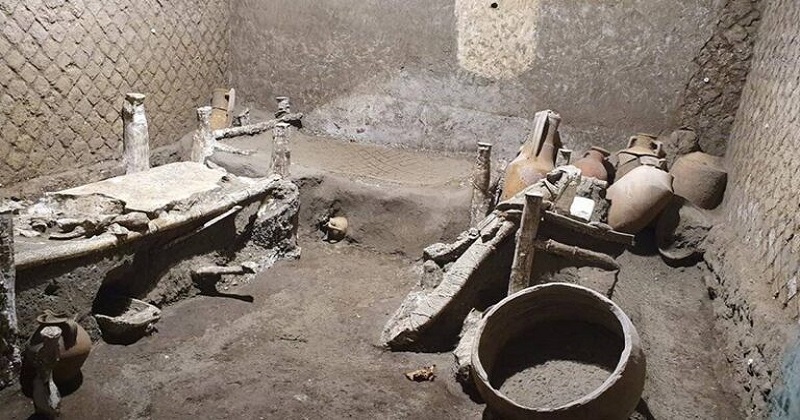
On Saturday, archaeologists in Pompeii said that they had discovered the remnants of a ‘slave room’ in an extremely uncommon find at a Roman mansion devastated nearly 2,000 years ago by Mount Vesuvius’ explosion.
During an excavation at the Home of Civita Giuliana, a suburban villa just a few hundred metres from the old city, a small chamber with three beds, a pottery pitcher, and a wooden chest was unearthed. A virtually intact elegant Roman chariot was unearthed here at the beginning of this year, and archaeologists said that the room likely housed slaves charged with maintaining and prepping the chariot.
‘This is a window into the precarious reality of people who rarely appear in historical sources, written almost exclusively by men belonging to the elite. The unique testimony into how the weakest in the ancient society lived… is certainly one of the most exciting discoveries in my life as an archaeologist’, said Pompeii’s director-general Gabriel Zuchtriegel.
When Mount Vesuvius erupted in 79 AD, it blanketed Pompeii in ash, killing everyone who hadn’t managed to flee in time. They were killed by heat shock or were crushed by crumbling structures.
The 16-square-metre (170-square-foot) chamber was a mix of bedroom and storage, with three beds (one of which was child-sized) and eight amphorae stored in a corner. Metal and cloth artefacts that seemed to be part of the chariot horses’ harnesses were found in the wooden box, and a chariot shaft was discovered sitting on one of the beds. Three horses’ carcasses were discovered in a barn during an excavation earlier this year.
‘The room grants us a rare insight into the daily reality of slaves, thanks to the exceptional state of preservation of the room,’ the Pompeii archaeological park stated.
Experts were able to produce plaster casts of the mattresses and other perishable goods, which left their impression in the cinerite (volcanic ash rock) that covered them, according to the report. The beds were built of a number of rough-hewn hardwood planks that could be changed to fit the height of the person using them.
Ropes were used to create the webbed foundation of the beds, which were then covered with blankets. While two of them were roughly 1.7 metres long, one was only 1.4 metres long and may have belonged to a toddler. As per the archaeological park, the three slaves might have been a family.
Also Read: Couple find 7.9 kg potato in their garden; apply for Guinness record
Under the mattresses, archaeologists discovered various personal items, including amphorae for private items, clay jugs, and what appears to be a chamber pot.
There are no remains of wall decorations, only a mark thought to have been left by a lamp placed on a wall, and the chamber was illuminated by a small higher window. The excavation is part of a 2017 initiative aimed at combating criminal activities in the region, which includes tunnel digging to access antiquities that may be sold on black markets.
For years, the Villa of Civita Giuliana has been systematically looted. According to the park, part of the ‘archaeological heritage’ in this so-called Slave Room had been looted as well. The damage caused by grave robbers at the property has been assessed at about two million euros ($2.3 million), the park said.

Post Your Comments